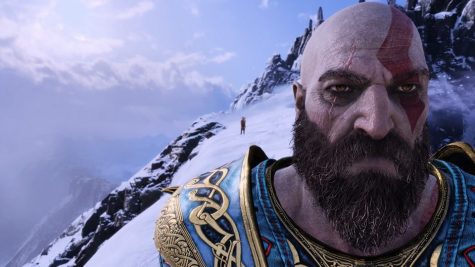Orientalism in Pop Culture Highlights Need for Informed Representation
Every passing year brings more and more entertainment media for us to consume. Whether that be TV shows, movies, or video games, we are seeing more diverse and inclusive stories than ever before. However, these stories are not always accurate or well-informed representations of marginalized identities and backgrounds, nor are they always properly funded, researched, or valued for the issues they aim to address. Unfortunately, many calls for proper representation are simply swept under the rug, and we are continually left with the same questions: why are we not telling more people’s stories, why aren’t they more genuine, and why aren’t those same people included in the process of telling them?
Orientalism is a term many have probably heard and maybe even used, but it is unlikely that they could fully explain its meaning or how it manifests in storytelling. Defined by Palestinian scholar Edward Said in 1978, Orientalism is the interpretation of Asian cultures by Westerners that is often objectifying, stereotyping, and prejudiced. Orientalism is most commonly used to describe depictions of the Middle East and North Africa. Orientalism is a heavy, complicated topic, so I’m going to leave it to you to watch YouTube videos about it during your next lunch break. What I’m specifically here to talk about is how we still see pesky examples of Orientalism in the media today. While representation has gotten better and more well-intentioned, it is often ultimately disappointing and leaves us wondering why we haven’t solved this pervasive issue.
House of the Dragon, the prequel series to Game of Thrones, aired its first season finale Oct. 23. I’m not well-versed in GoT lore myself, but considering the show’s character and set designs as well as the new show’s set aesthetics, there is clearly quite a bit of Islamic, Middle Eastern, and Arabic influence in this adaptation of George R.R. Martin’s saga. It doesn’t take much internet browsing to get an idea of how Orientalist themes and stereotypes heavily played into the original series, especially with the portrayal of the Dothraki people. Their resemblance to MENA cultures (or perversions of them) and stereotypes is uncanny.
Just by looking at the furniture, windows, wall arches, and other statement decor pieces in the new show, I can see some Arabian design elements. One of the main countries House of the Dragon was filmed in was Spain, which has a long history of MENA cultural influence and immigration before the Spanish Inquisition. Political and military events of the eighth century led to a large population of Muslims and Arabs in southern Spain, near North Africa. This period of history would eventually be known as Islamic Spain. Given this context, there is a precedent for Arabic language, Islamic art, and Islamic architecture in House of the Dragon, but then there is just as much of a reason to depict Middle Eastern and North African characters (and actors to portray them). The design looks great and fits the context, but it stops at the aesthetics.
All of this is subtle compared to other heavy hitters like 2021’s Dune, which came under criticism for its clear usage of classic MENA concepts — which is true to the books — without consistent casting to include MENA actors. None of this is meant to make blanket statements, but it’s food for thought, since we are continuing to see the same issues and not address the root of the problem: lack of inclusion at every level of development. It’s very important in any form of storytelling to do thorough research into the various sources or cultures you’re drawing from and to work with experts on these said fields, because doing poor research or just guessing always shows in the final product.
As an aspiring game artist and expert button masher, I am especially attuned to you about this topic in video games. In this industry, we are still seeing frustratingly silly mistakes regarding representation that highlight a lack of basic understanding of other cultures and lack of commitment to working with people from MENA backgrounds. Just last year, Hitman 3 debuted with completely backwards and disconnected Arabic throughout the entire first level. Call of Duty: Vanguard that same year disrespectfully featured pages of the Qur’an strewn all over the floor beneath players’ dirty boots and blood. Possibly worst of all, after more than 10 years of people telling tone-deaf developers that Six Days in Fallujah, a game set in 2004 that depicts a massacre of Iraqi civilians, is not appropriate, it is set for release next month. Violent, perverse depictions of Middle Eastern people in video games are nothing new, but we should not still be seeing such outrageous choices. Many of these issues would not even be a problem if studios and development teams would simply hire more creative and talented people of color.
In using diverse casts, incorporating different cultures and traditions, and representing people and ideas that are often misunderstood and underrepresented, there is a moral imperative to get things right. You must work with people who truly understand the content you are including, and you must be telling your story in a way that is respectful to the communities you are borrowing from or speaking on behalf of. Not only does it help dispel misinformation and harmful preconceived notions, but it also makes for much more engaging and enriching art. At the end of the day, all of these forms of media are aiming to do one thing: tell a story. No one can make an AAA game or an Oscar-winning film by themselves, but you are an integral piece of the puzzle. The best person to tell your story is you.






